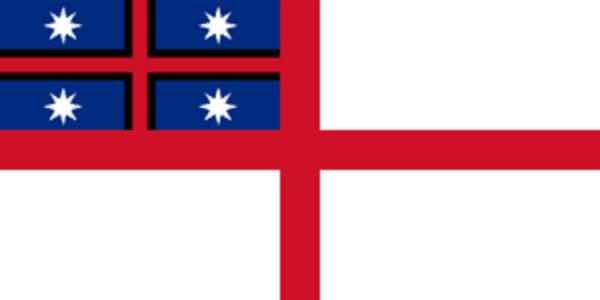
He wakaputanga o te Rangatiratanga o Nu Tireni 1835
Over a period of 28 years, from 1807, the chiefs of Hapu cf. tribes, throughout the regions of Te Ika a Maui – the land currently known as the north island of New Zealand – conferred on how they could best maintain their Ancestral Rights over their respective Rohe cf. territory, and implement a system of law and order to manage and care for the newcomers arriving in their midst.
On 28th October 1835 He wakaputanga o te Rangatiratanga o Nu Tireni, commonly referred to as He wakaputanga, was signed by thirty-four Tino Rangatira at Waitangi and was subsequently internationally recognised, thus enshrining the Independence, Sovereignty, Constitution, and Jurisdiction of each Hapu in International Law.
Over the next four years a further eighteen Tino Rangatira from elsewhere also signed the document. The assembly of the participating Hapu is called Ko te wakaminenga o nga Hapu o Nu Tireni cf. Congress of Hapu of the New Territory.
Sovereignty is not Monarchy. Sovereignty is making a covenant with the Great Creator to live in Honour of the Creator and in service to all Humanity, especially the children.

This Covenant and Proclamation of Sovereign State was acknowledged by William IV, King of England, among other nations, making it a Taonga of great significance then and today.
It is a Proclamation announcing that the absolute responsibility of care in each Rohe cf. territory, is held by each of the Rangatira cf. respective Chiefs, and set in place a new Jurisdiction upholding Hapu Customary Lore/law as the paramount authority. This is internationally acknowledged and recognised and has never been refuted.
The acknowledgement of He wakaputanga by William IV, and at least four other nations, means that each Hapu of Nu Tireni operates autonomously within a Jurisdiction founded in Customary Lore, though working collectively for the betterment of all who dwell within each Rohe.
The Proclamation also acknowledges the Right of, and enables, all Native peoples around the world, irrespective of their ethnicity, to live by their own Customs and Usages, and to manage their own affairs without interference from foreigners, whilst upholding the basic tenets of Tika, Pono, me te Aroha cf. Righteousness, Truthfulness, with Love and Empathy. He wakaputanga o te Rangatiratanga o Nu Tireni is recognised by International Law.
Te Tiriti o Waitangi – 6th February 1840
(not to be mistaken for the Treaty of Waitangi, English text)
Five years after He wakaputanga announced to the world their Rangatiratanga, their autonomy, their Sovereignty, and their collective capacity, most Rangatira were party to the signing of Te Tiriti o Waitangi, a Covenant between Victoria, Queen of England, and the many Rangatira of the many Hapu, which formed the foundation for the working relationship between the many Whanau/Hapu Rangatira, some 544, and Victoria Queen of England.
Essentially, He wakaputanga o te Rangatiratanga o Nu Tireni set the lawful foundation for Te Tiriti o Waitangi, which was signed 5 years after the International Recognition of He wakaputanga o te Rangatiratanga o Nu Tireni. Both documents started their negotiations around the same time of 1807/8.
Te Tiriti is a Treaty which granted a privilege (Article 1) to Victoria to establish an administrative governance founded in Common Law and upholding Tikanga to administer for those people not Mana Whenua. Article 2 granted Queen Victoria a privilege to administer Titles of Usage over such land as agreed to be leased to Her by each Rangatira. And Article 3 granted to Mana Whenua the same Rights that any English people have. He wakaputanga o te Rangatiratanga o Nu Tireni, is still a living document and sets the foundation for the whare of peaceful collaboration for the betterment of all.
Fact in Law, the Rangatira and Hapu never ceded their Ancestral Right nor authority of their respective Territories, nor their Sovereignty with Te Tiriti o Waitangi. After all, logically, why would they cede their Ancestral Right to their Whenua/Rohe, their autonomy and their Sovereignty, only five years after spending 28 years defining and then Proclaiming it?
He wakaputanga is a document that most people in New Zealand have no knowledge of.
Āwhitu Collective Honours both of these documents. Within them are the Tikanga that guide our choices as Sovereigns and as a Collective.
Āwhitu Collective have Proclaimed our alignment with te Hapu wakaminenga O Nu Tireni, our standing as a Collective and our recognition of He wakaputanga and Te Tiriti. In doing so we acknowledge not only our Right to be self-determining, but also the responsibility that comes with committing to live in Honour as Sovereign, our acknowledgment of the Ancestral Right of the Mana Whenua, and of aligning with the Hapu Tikanga.
The establishment of Āwhitu Collective is one way that we are enacting our self-determination so that we have choices outside of mainstream options while also offering the community the same opportunity to take responsibility for their own choices.
If you wish to learn more about He wakaputanga o te Rangatiratanga o Nu Tireni check out our Wananga Workshop page for upcoming wananga dates or Contact Us with your questions.
To find out more about Āwhitu Collective, peruse the pages of this website at your leisure, or check out our Upcoming Events page to participate in one of our activities.
Nga mihi nui